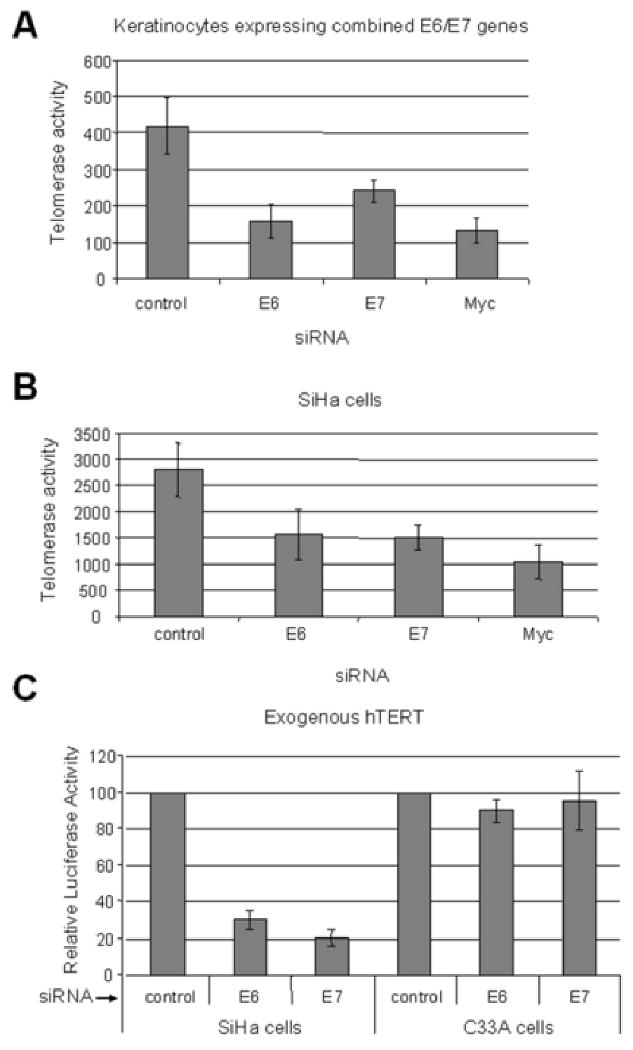Fig. 3. E6/E7 contribute to the telomerase activity of E6/E7 immortalized HFKs and HPV-positive tumor cells.

(A) Telomerase activity inhibition by siRNAs in E6/E7 expressing HFKs. Telomerase activity was measured with a quantitative assay in cells treated with the above siRNAs. Consistent with their ability to inhibit E6, the siRNAs for E6 and E7 decreased telomerase activity by approximately 50%. Myc siRNA was used as a positive control since it has been shown to inhibit cellular telomerase activity. (B) Telomerase activity in SiHa cells after siRNA transfection. Telomerase activity was also reduced in SiHa cancer cells by approximately 50% after treatment with either the E6 or E7 siRNA duplexes. However, since the SiHa cells express E6/E7 coordinately, we cannot conclude an independent role for E7 from these experiments. (C) hTERT promoter activity in tumor cells with siRNA treatment. The wild-type hTERT promoter reporter vector was transfected into the indicated cells together with siRNA for either E6, E7, or control. The value of the promoter activity with control siRNA was set to 100. The hTERT activity was reduced in SiHa cells after treatment with either E6 or E7 specific siRNA by approximately 70% and 80% respectively. Importantly, in cervical cancer cells which lack HPV-16 E6/E7 (C33A), the siRNAs showed no significant inhibition of telomerase activity.
